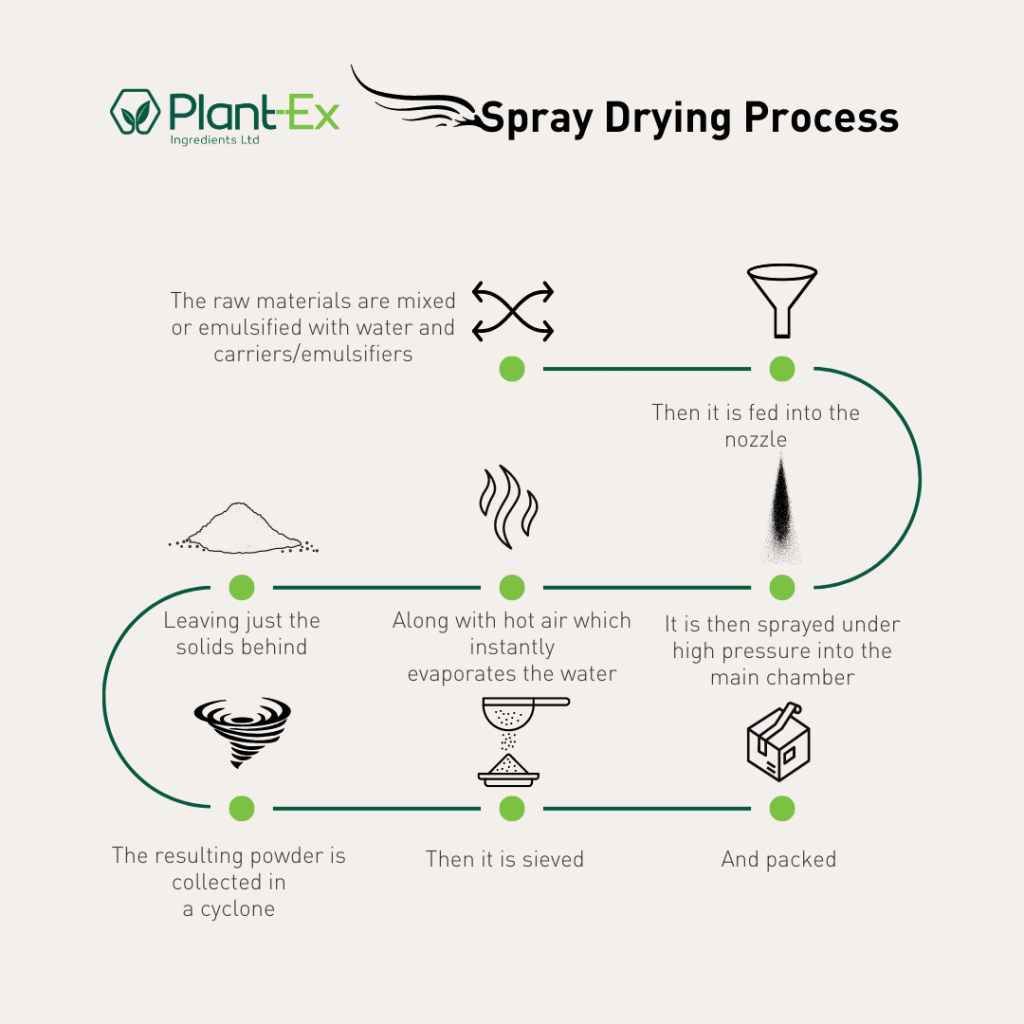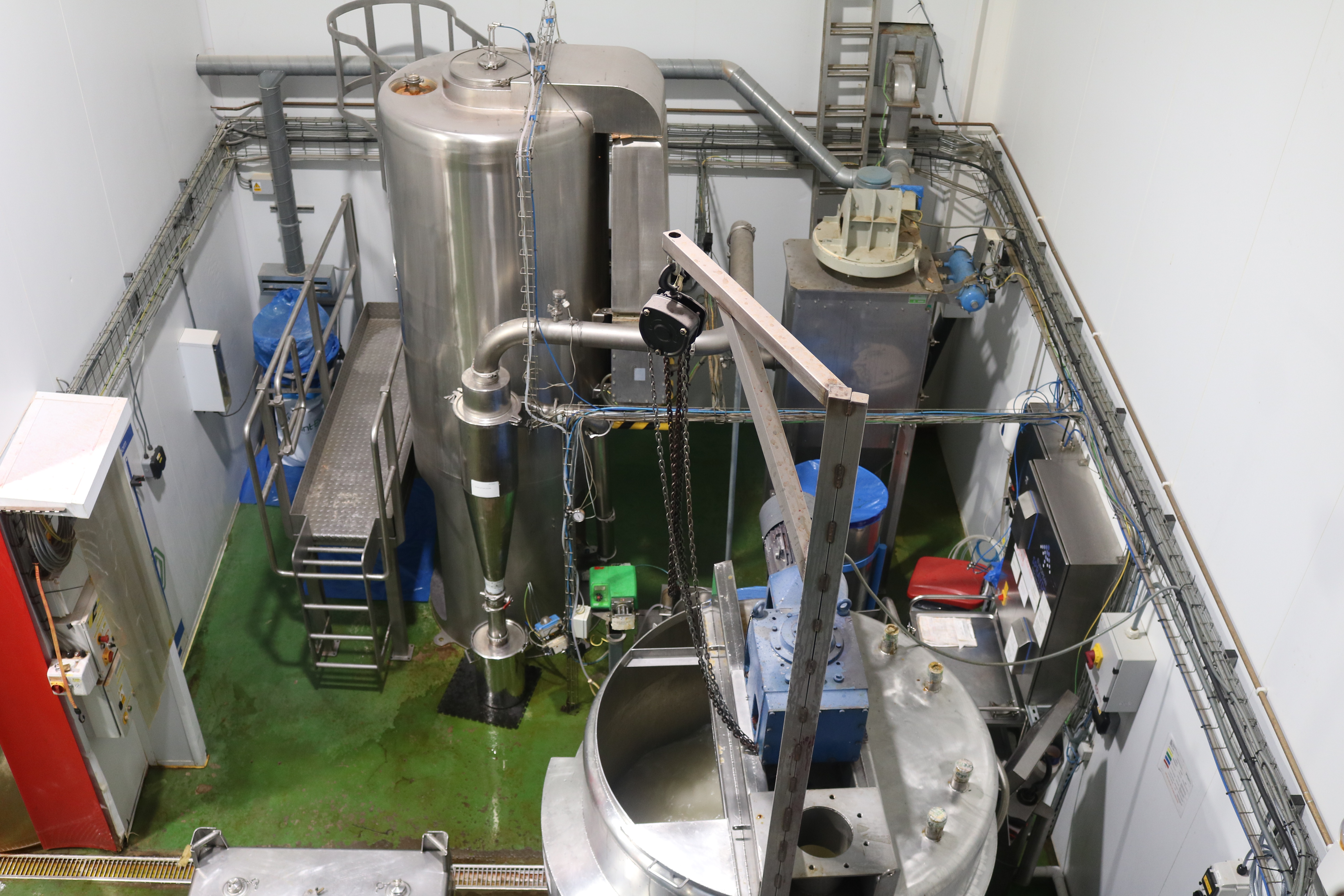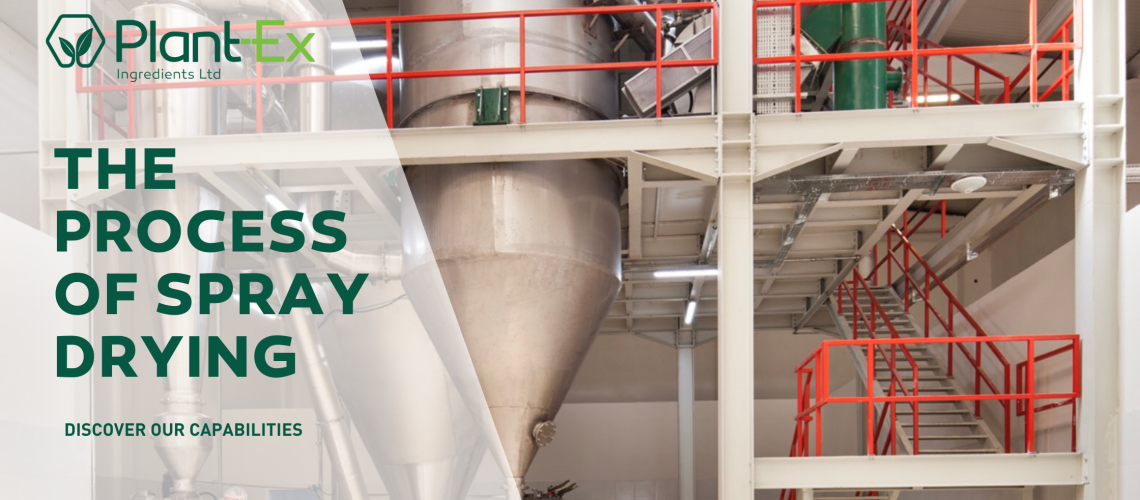Traceability is at the forefront of what we do, and having on-site spray driers at our sites in the UK and Turkey means we have complete control over the process from sampling to production and right through to dispatch. Our team are experts in this field – keep reading to find out how our spray driers work.

The Process
Initially, we will create a ‘slurry’ – this comprises all active raw materials (Aromachemicals, extracts or colours) that have been emulsified with water and the carrier to create a thick liquid. Maltodextrin is the most commonly used carrier for powdered products at Plant-Ex. However, the company may also use different Gums or Starches to enable greater encapsulation where required. The slurry is kept in a tank next to the spray drying tower which feeds into a pump that takes the liquid to the atomiser unit at the top of the tower.
As the slurry enters the atomiser, either a high pressure or a high speed rotating disk will turn the slurry into a mist of tiny droplets. Hot air then blasts into the chamber carrying the mist in series of Vortex type patterns and gradually evaporating the water from the slurry. The temperature at the top of the tower is around 185°C, whereas by the time the particles have dropped to the bottom of the tower the evaporation process will have taken the majority of the heat and the air is around 85°C.
Left behind are particles comprising the raw materials encapsulated in a matrix type structure with the carrier, these are carried from the main chamber to a cyclone by the air moving through the machine.
The cyclone is where the powder particles move toward a disruptor to break the airflow and then into a rotary valve which drops the powder into the packing chute. Here, the powder is sieved and packed into a Plant-Ex bag.
Why Choose a Spray Dried Product?
A spray dried product has lower moisture content compared to liquid products, which usually means that the shelf life of powders can be longer. Standard shelf life of Plant-Ex’s spray dried products are 12+ months, whereas liquids can be around 9 months.
Most liquid colours require to be store chilled, which can be problematic for customers who don’t have chillers at their site, or their chillers have limited space. Powder products are recommended to be stored at ambient, solving any storage problems!
Products like honey, molasses and syrups can be time-consuming to weigh and messy within production, which is often why customers seek products such as honey powder and molasses powder from Plant-Ex’s extracts division. By using these products in your production, production operatives can quickly weigh how much is needed and the clean up is simple!
Other reasons why we would recommend using a spray dried product over a liquid product include:
- Spray drying is a simple form of encapsulation – essential oils and extracts are more stable in powders, and they’re less likely to degrade and oxidise over their shelf life.
- Spray dried products are water soluble and easy to dissolve – this is especially key when using products like honey powder, as it can be re-hydrated if necessary once in production.
- Blends – Plant-Ex’s products can be blended with other dry ingredients creating dry blends, which can then be used in seasonings.

Although spray dried products are a lot of what Plant-Ex produces, there are a lot of applications where a liquid product would work better. Get in touch with our sales team to help determine what product would work best in your applications here.
